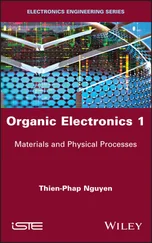To overcome these challenges, several future research directions are suggested as follows.
1 Improving electrolyte's electrochemical stable potential window (ESPW) value. The ESPWs are dependent on the cation and anion of the conducting salt and the solvent. It should be noted that in most cases, an increase in electrolyte ESPWs may result in the deterioration of other properties such as ionic conductivity and viscosity of electrolytes. The improvement of ESPWs could be achieved by exploring new organic solvents and new conducting salt or by optimizing/modifying the commonly used organic electrolytes. However, it is difficult to achieve all the requirements, such as high ESPW, high ionic conductivity, high physicochemical stability, low viscosity, and eco‐friendliness. Some tradeoffs may be reasonable in solving the practical problems.
2 Increasing the working temperature range for ES operation. Some additives like ethylene glycol may be explored to decrease the power temperature limit in aqueous electrolytes. Regarding organic electrolytes, the development of new organic solvent mixtures could possibly obtain electrolytes with a wider operating temperature range.
3 Optimizing the interaction effects between the electrolyte and electrode materials to improve the EC performance. In situ characterization methods such as fourier transform IR (FTIR) and Raman microscopy can be used to characterize the electrolytes in operating condition. The interface between an EC layer and electrolyte can be observed under conventional transmission electron microscopy (TEM) [136, 137].
4 Combining theoretical and experimental investigations to analyze, guide, and design electrolyte. The corresponding ionic mechanism can be simulated and interpreted by material calculations. It is necessary to fundamentally understand the mechanisms of electrolyte ion dynamics by using both theoretical modeling and experimental approaches.
5 Development of standard methods to evaluate the performance of electrolytes. It is necessary and important to develop proper and standardized methods to evaluate the performance of different electrolytes and their associated ECs.
Table 2.3 Comparison of the Li +conductivities of some reported solid polymer electrolytes.
| Solid polymer electrolytes |
Type of electrolytes |
Anionic center |
Ionic conductivity (S/cm) at RT |
References |
| P(MEO‐MALi) |
Random copolymer |
−CO 2 − |
1.5 × 10 −7 |
[163] |
| PAE 8‐ co ‐E 3SO 3Li |
Random copolymer |
−SO 3 − |
2.0 × 10 −7 |
[164] |
| Random copolymer |
−(C 2O 4) 2B − |
1.9 × 10 −7 |
[165] |
| POE |
Random copolymer |
‐CF(CF 3) SO 3 − |
1 × 10 −7 |
[166] |
| P(LiSMOE n)s |
Random copolymer |
−C 6H 5·SO 3 − |
1.5 × 10 −7 |
[167] |
| Polyphosphazenes |
Random copolymer |
‐SO 2N −SO 2CF 3 |
3.0 × 10 −6 |
[168] |
| Li[poly(styrenesulfonyl(trifluoromethylsulfonyl)imide) (PSTFSI)‐ co ‐methoxy poly(ethylene glycol) acrylate (MPEGA)] |
Random copolymer |
–SO 2N −SO 2CF 3 |
7.7 × 10 −6 |
[169] |
| Poly(2‐oxo‐1‐difuluoroethylene sulfonylimide) (LiPI)‐polyether |
Blended copolymer |
–CO 2CF 2SO 2N − |
1 × 10 −6 |
[170] |
| P(LiSMOE n) |
Blended copolymer |
–CO 2 − |
1.5 × 10 −7 |
[167] |
| Poly(5‐oxo‐3‐oxy‐4‐trifluoromethyl‐1,2,4‐pentafluoropentylene sulfonylimide lithium) (LiPPI) |
Blended copolymer |
−COCF(CF 3)O(CF 2) 2SO 2N − |
1 × 10 −5 |
[171] |
| Poly (estercarbonate) (PEC) based |
Blended copolymer |
–SO 2N −SO 2CF 3 |
1 × 10 −9 |
[172] |
| LiTFSI |
Blended copolymer |
–SO 2(CF 2) 4SO 2N − |
1 × 10 −6 |
[173] |
| LiPSFSI/PEO |
Blended copolymer |
–SO 2N −SO 2F |
1 × 10 −8 |
[174] |
| poly[(4‐styrenesulfonyl)(trifluoromethyl(S‐trifluoromethylsulfonylimino)sulfonyl)imide] (PSsTFSI −)/PEO |
Blended copolymer |
–SO 2N −SO(NSO 2CF 3)CF 3 |
1 × 10 −8 |
[174] |
| PEO based |
Block copolymer |
–CO 2 − |
1 × 10 −7 |
[175] |
| poly (ethylene glycol) macromer (PEGM) based |
Block copolymer |
–SO 2N −SO 2CF 3 |
2.3 × 10 −6 |
[176] |
| Polystyrene‐PEO based |
Block copolymer |
–SO 2N −SO 2CF 3 |
1.3 × 10 −5 |
[177] |
| PEO‐PSLiTFSI |
Block copolymer |
–SO 2N −SO 2CF 3 |
3.0 × 10 −8 |
[170] |
| Methacrylic‐PEO |
Block copolymer |
–SO 2N −SO 2CF 3 |
3.4 × 10 −8 |
[177] |
| PEALiFSI |
Block copolymer |
–CON −SO 2CF 3 |
5.84 × 10 −4 |
[178] |
| PEO‐PLSS |
Graft copolymer |
–SO 3 − |
7.0 × 10 −8 |
[179] |
| LiBOPEG 600 |
Homopolymer |
–OP −(C 2O 4) 2 |
1.6 × 10 −6 |
[180] |
Table 2.4 Composition and performance of ionic liquid electrolytes.
| Year |
Electrolyte |
Ionic conductivity (S/cm) at RT |
References |
| 2005 |
PVA–KOH |
1.0 × 10 −2 |
[181] |
| 2005 |
PEGDA–PVdF–EC–DMC–ethylmethyl carbonate (EMC)–LiPF 6 |
1.5 × 10 −3 |
[182] |
| 2010 |
[PPyr 11TFSI] 28%LiTFSI 12%[Pyr 14TFSI] 60% |
1.6 × 10 −6 |
[183] |
| 2010 |
PEO 20LiTFSI 1[Pyr 1.2O1TFSI] 1.5 |
7.0 × 10 −5 |
[184] |
| 2010 |
PEO 25–LiTf–IL |
3.0 × 10 −4 |
[185] |
| 2011 |
PEO 20LiTFSI 1[S 2.2.2TFSI] 1 |
5.0 × 10 −4 |
[186] |
| 2012 |
PEO 20LiTFSI 1[Pip 13TFSI] 1.27 |
2.1 × 10 −4 |
[187] |
| 2013 |
poly(methyl methacrylate–acrylonitrile–vinyl acetate) [P(MMA–AN–VAc)]‐ N ‐methyl‐ N ‐butyl pyrrolidinium bis(trifluoromethansulfonyl)imide |
1.2 × 10 −3 |
[188] |
| 2013 |
PEO 20LiTFSI 2[Pyr 14TFSI] 6 |
5.0 × 10 −4 |
[189] |
| 2013 |
Chitosan–PEO–NH 4NO 3–EC |
2.06 × 10 −3 |
[190] |
| 2014 |
Poly(ε‐caprolactone)–NH 4SCN–EC |
3.8 × 10 −5 |
[191] |
| 2014 |
LiTFSI in P14TFS LiTFSI/P14TFSI/PEO |
0.4 × 10 −3 |
[192] |
| 2015 |
PEO 20LiTFSI 2[Pyr 1.2O 1TFSI] 4 |
2.5 × 10 −4 |
[193] |
| 2017 |
PEO‐1‐butyl‐3‐methylimidazolium bis(trifluoromethylsulfonyl)imide |
2.2 × 10 −4 |
[194] |
| 2017 |
PEO‐(EMimFSI) |
1.3 × 10 −3 |
[195] |
| 2017 |
Oligoethylene glycol/ N ‐butyl imidazole |
4.8 × 10 −4 |
[196] |
| 2018 |
PVDF–HFP(EMITFSI) |
0.76 × 10 −3 |
[197] |
| 2018 |
PVDF–HFP–(SiO 2PPTFSI) |
0.64 × 10 −3 |
[198] |
| 2019 |
PIL:[PVEIm][TFSI] |
5.92 × 10 −4(60 °C) |
[199] |
| 2019 |
PEO–TBPHP |
2.51 × 10 −3 |
[200] |
| 2019 |
PEO–EMimFSI |
3.6 × 10 −4 |
[201] |
Finally, struggling to find suitable composite electrolytes with high conductivities during wide range of temperature always deserves more study. Commercial electrolytes require high ionic conductivity at room temperature, safety, and easy processing.
Читать дальше












